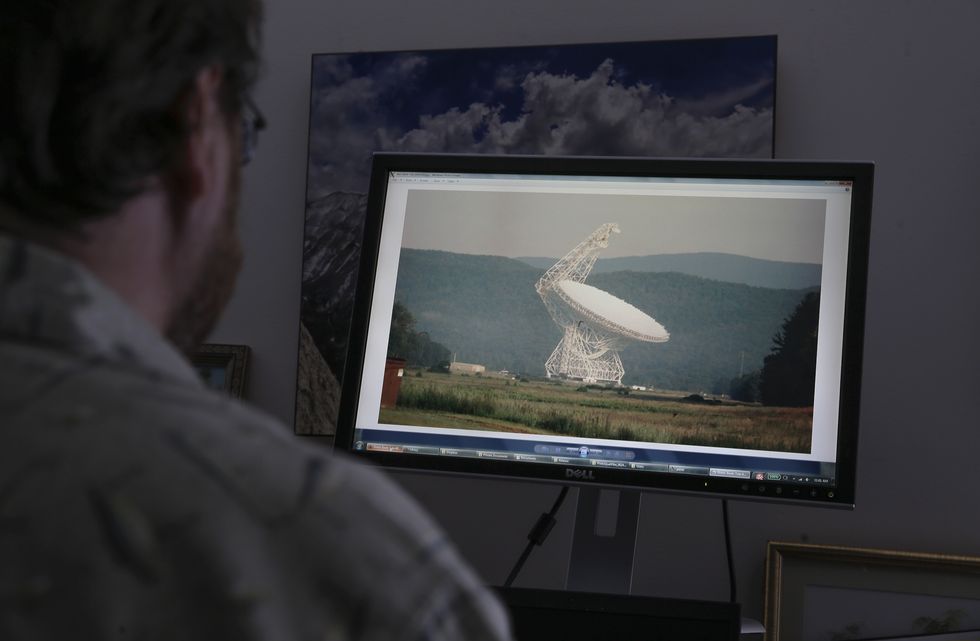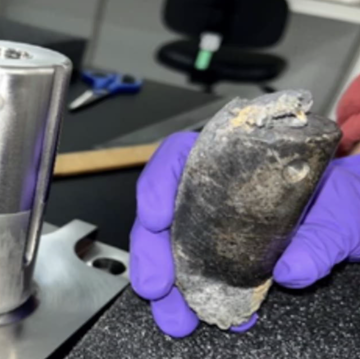- Thankfully, the likelihood of a malicious alien civilization is vanishingly small, a scientist has found. Phew!
- There may be as many as 4.42 in our vast galaxy, but just 0.22 could travel to us.
- This research builds a cumulative math model that considers many factors.
Most people agree that we should be monitoring the airwaves, so to speak, to search for other civilizations in the universe—but people strongly disagree about whether we should send our own messages out there. If a civilization is malicious, do we want them to know we’re out here? Are we waving hello to our own executioners?
In a new preprint paper published to the arXiv server in May (meaning it has not yet been peer-reviewed), researcher Alberto Caballero, a Ph.D. student at the University of Vigo in Spain, explores a really thorny issue within the community of people who work with SETI, the Search for Extra-Terrestrial Intelligence. SETI’s main job is to listen to the swirling miasma of space in case we ever detect signs of life elsewhere or even receive a broadcast sent by another civilization.
👽 You love aliens. So do we. Let’s nerd out over them together—join Pop Mech Pro.
“Active SETI (Active Search for Extra-Terrestrial Intelligence), sometimes referred to as METI (Messaging to Extra-Terrestrial Intelligence), is a form of SETI that has been barely practiced since the first interstellar radio message, the Arecibo Message, was sent in 1974 to the globular star cluster M13,” Caballero explains in the paper. Active SETI remains a sore subject because detractors believe we’re drawing attention to ourselves from totally unknown, possibly malicious aliens.
A lot is at play when it comes to the search for aliens in general. The Fermi Paradox is an idea that best sums it up: how can there be infinite planets in our universe with a nonzero possibility of life, but we’ve never seen so much as a glimpse or a whisper of another civilization anywhere? But, of course, that assumes the other civilization will be advanced enough to communicate or travel in space. There could be infinite planets with life forms that are still in the “gloopy pond scum” stage, just starting to develop photo-reactive eye cells, for instance. It may be a billion years before they start walking upright and tweeting reaction gifs.
To estimate the likelihood of an invading nearby civilization, Caballero starts with an interesting premise: how likely are we to invade another civilization that we discover? To calculate that, he compiles the staggering number of times Earth nations have invaded each other as acts of war. This, he says, is a new methodology for calculating the likelihood of a malicious alien civilization.
He also observes that energy consumption on Earth has increased as the likelihood of invasion has decreased: “[T]here seems to be an indirect correlation between the human probability of invasion and the world’s development based on energy consumption. The more developed humanity is, the less likely invasions are,” Caballero says.
And when combined with well-established estimates of the likelihood of intelligent life elsewhere in our galaxy, we can work out a pure probability. That number is very low—eight deep into the decimals of one percent—with a flat number of malicious civilizations of just 0.22. Hopefully that’s the one-fifth that doesn’t have access to their local planetary weapons systems.
Caballero told Vice that he didn’t include one figure in the paper, which represents the total number of malicious civilizations that don’t have intergalactic spaceflight yet. According to his calculations, there are likely 4.42 of these civilizations. But this brings up some philosophical questions—if a malicious tree falls in a forest but no one can hear it, does it make an intergalactic sound? After all, a guilty criminal must have means, motive, and opportunity. With just means and motive, you’re sending mean tweets to Earth instead.
Caballero writes that ultimately, he believes the likelihood of a malicious alien civilization is lower even than the possibility of Earth being hit by a so-called “planet killer” asteroid. “We could send up to 18,000 interstellar messages to different exoplanets and the probability of invasion by a malicious civilization would be the same as that of an Earth collision with a global-catastrophe asteroid,” he concludes.
A paper like this is built on a series of estimations and decisions that many other experts may not agree with, but that’s part of the point. For those who argue about the role of SETI versus “active” SETI, the debate has been very abstract because of the unknown nature of all the quantities involved. Caballero has put some of those numbers on paper and used them to come up with some kind of answer—something people can now discuss and iterate on in further study.
For some, seeing the vanishingly small likelihood of any kind of complex life, let alone malicious life, might make SETI’s efforts seem more optimistic than ever.

Caroline Delbert is a writer, avid reader, and contributing editor at Pop Mech. She's also an enthusiast of just about everything. Her favorite topics include nuclear energy, cosmology, math of everyday things, and the philosophy of it all.














